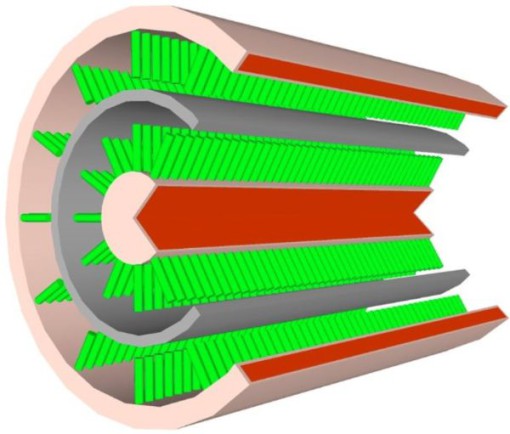 Polymers generally operate as thermal insulators, but with a process of electro-polymerization the researchers of the Georgia Institute of Technology have obtained some arrays of polymer nanofibres able to conduct heat 20 times better than the original polymer, for thermal levels up to 200°C. Actually, they have achieved what can be defined as “thermal interface” to be used for draining heat from electronic devices, achieving that cooling effect that is indispensable to grant the correct operation of systems and subsystems used for instance in Data Centers but also in cars or in LED high-intensity lighting solutions. The material perfectly adheres to the devices, in whose cooling it must contribute, eliminating the thermal expansion problems often caused by other heat conductive materials. This thermal interface has been produced starting from polythiophene, thiophene polymer, aromatic compound formed by four atoms of carbon and one of sulphur bound in a penta-atomic ring structure: the “aromatic” name derives from the fact that the first compounds of this class identified in the past had intense and characteristic odours. The thermal properties of this new material derive from the capability of aligned polymeric chains of facilitating the transfer of phonons, quantum particles associated with vibrational waves in solids, analogue to the photons of electromagnetic waves. When a reticle of atoms of a solid material receives energy in the heat form, it determines a vibrational energy that does not concern single atoms but propagates through the material like sound waves, in discrete quantities, and these energy quanta are named phonons.
Polymers generally operate as thermal insulators, but with a process of electro-polymerization the researchers of the Georgia Institute of Technology have obtained some arrays of polymer nanofibres able to conduct heat 20 times better than the original polymer, for thermal levels up to 200°C. Actually, they have achieved what can be defined as “thermal interface” to be used for draining heat from electronic devices, achieving that cooling effect that is indispensable to grant the correct operation of systems and subsystems used for instance in Data Centers but also in cars or in LED high-intensity lighting solutions. The material perfectly adheres to the devices, in whose cooling it must contribute, eliminating the thermal expansion problems often caused by other heat conductive materials. This thermal interface has been produced starting from polythiophene, thiophene polymer, aromatic compound formed by four atoms of carbon and one of sulphur bound in a penta-atomic ring structure: the “aromatic” name derives from the fact that the first compounds of this class identified in the past had intense and characteristic odours. The thermal properties of this new material derive from the capability of aligned polymeric chains of facilitating the transfer of phonons, quantum particles associated with vibrational waves in solids, analogue to the photons of electromagnetic waves. When a reticle of atoms of a solid material receives energy in the heat form, it determines a vibrational energy that does not concern single atoms but propagates through the material like sound waves, in discrete quantities, and these energy quanta are named phonons.
Wire Tech World © 2025 All Rights Reserved


